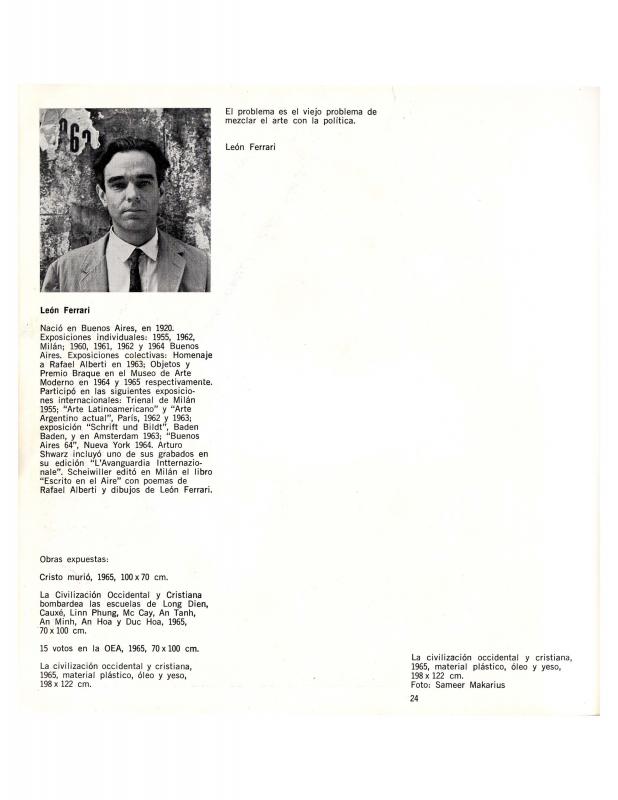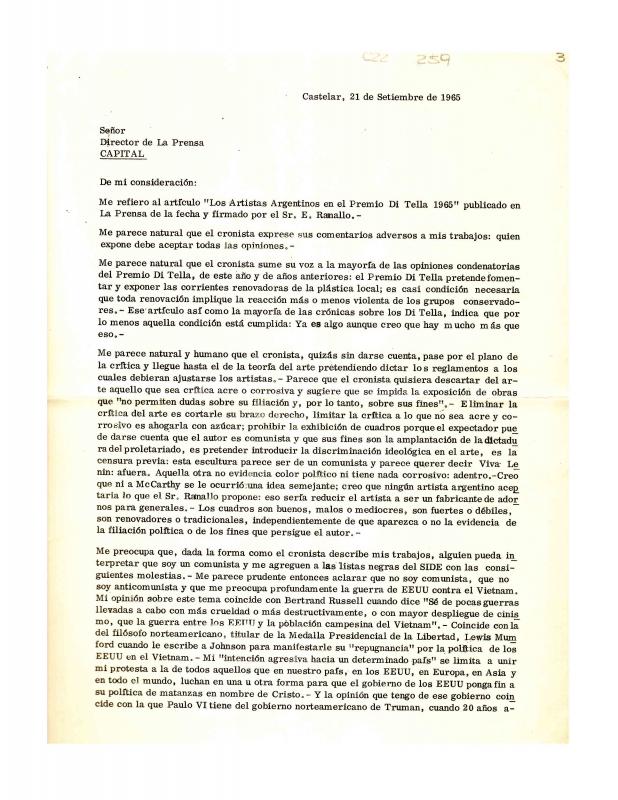León Ferrari (1920–2013) was born in Buenos Aires, the son of Augusto Cesare Ferrari, the Italian artist and architect. The younger Ferrari was a latecomer to the plastic arts, a status which allowed him to function as a link between the generation of artists from the late fifties and the young avant-garde of the sixties. His early works were ceramic sculptures, but in later years he experimented with wire structures, with a visual form of writing, and with collages. There are two distinct themes running through his work: one is a strong condemnation of military dictatorships, American imperialism, and the ideology of the Catholic Church. The other has a more formalistic quality, expressed in a conceptual style and, at times, in the surrealist tradition. His 1965 object-montage, titled Civilización Occidental y Cristiana [Western Christian Civilization], was censured at theCentro de Artes Visuales del Instituto Torcuato Di Tella [the Torcuato Di Tella Institute’s Visual Arts Center] (see documents 744085 and 761879). It depicts a Christ mounted on a US Air Force bomber that is plunging Earthward. Ferrari was involved in the political conceptualism movement of the seventies (particularly Tucumán Arde, in 1968).In response to the most recent Argentine military dictatorship’s repressive regime (1975-83), he went into exile in Brazil, where he explored a variety of ideas, such as formalism and the reproducibility of a work, as well as the spatial relationship between sculpture and music (see documents 743960, 744392, and 743870, among others). In 1984 his work was once again exhibited in Buenos Aires, where he finally returned and settled. The pages in Ferrari’s notebook are numbered on the back. The book’s first entry is dated November 6, 1962, when he began to record his work in progress, notes on his basic ideas, as well as sketches and outlines for his drawings, writing, sculpture, and other projects. It also contains notes of a personal nature. He took part in the Torcuato Di Tella Institute’s 1965 National and International Prize, exhibiting three boxes that referred to the Vietnam War.





